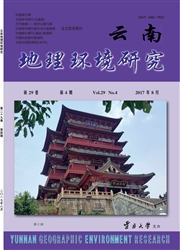

 中文摘要:
中文摘要:
运用乌鲁木齐市1978~2010年城市建成区面积、非农业人口、地区生产总值和人口密度的数据,引入了城市地理学中的城市人口—城区面积异速生长模型,对城市人口—面积异速生长关系的标度指数、线性因子等关系进行分析讨论。然后运用C-D函数理论,分析城市化过程中人口—土地—产值结构之间的关系。结果表明:(1)1978~2010年不同时间序列城市人口-面积都是异速正生长关系,标度因子系数明显较高并呈下降趋势,说明土地城市化过程快于人口城市化过程,但它们之间的差距在逐渐缩小。(2)通过建立城市投入—产出模型得出:1978~2010年,人口和面积弹性系数均呈下降趋势,而人口弹性系数比面积弹性系数下降幅度小,表明乌鲁木齐市城市化进程在进一步加快。
 英文摘要:
英文摘要:
Using the date of urban built - up area, non - agricutural population, GDP and population density in 1978 -2010a by introduction of modification to urban allometric growth model and C -D function in Urban Geog- raphy, After an in - depth discussion of the standard value of the scaling factor and Linear Scale factor, analyzes the scaling factor and Linear Scale factor of urbanized population - area allometriy, Then analyzes the urban input - output structure By the Cobb - Douglas function, the paper concludes that: ( 1 ) urban growth in Urumqi is positive allometry at different time series in 1978 -2010a, significantly higher coefficient of the scaling factor and declining trend, indicating that land urbanization process is faster than population urbanization process, but the gap is gradually shrinking. (2) indicating that the urban input - output structure By the Cobb - Douglas func- tion, the urban input- output urbanized population- area of elastic coefficient is declining trend in 1978 -2010, the elastic coefficient of population of the declining trend is faster than its area elasticity coefficient, shows that ur- banization is further accelerate in Urumqi.
 同期刊论文项目
同期刊论文项目
 同项目期刊论文
同项目期刊论文
 期刊信息
期刊信息
